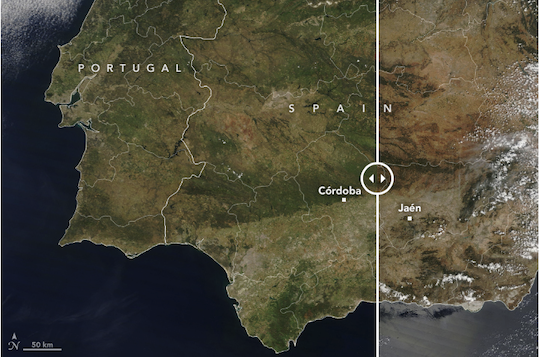The lack of rainfall is a concern that affects the entire Iberian Peninsula. This situation affects agricultural areas and their productivity more negatively, due to their climatic dependence. The situation is so serious, especially in Andalusia, that even NASA has echoed the case, which has disseminated an image taken from the Terra satellite, which shows how «a drought stains the largest olive oil producing region in the world with brown».
Since the start of the hydrological year on October 1, 2022, Spain received 28 percent less rain than expected in mid-May 2023, according to the Spanish meteorological agency. The drought dried up reservoirs, dried up olive groves and led to water restrictions across the country.
Images obtained by NASA’s Terra satellite show where green vegetation in May 2022 turned brown in May 2023. Low rainfall further dried out soils that were already unusually dry in 2022. According to a recent report by Copernicus Climate Change Services, soil moisture across Europe in 2022 was the second lowest in the last 50 years.
As NASA recognizes, southern Spain, a key agricultural region, is especially brown in the map above. The Andalusia region of southern Spain is the largest olive oil producing region in the world. As of May 19, the Cordoba airport had received only about 30 percent of the expected rainfall, compared to the 1981-2010 average.
Similarly, little rain fell in Jaén: only 20 mm of the expected 125 mm of rain fell in mid-May (16 percent of normal). The region is known for its extra virgin olive oil produced from the Picual olive variety. According to one estimate, the Jaén region of Andalusia produced 25 percent of the world’s olive oil supply in 2022.

